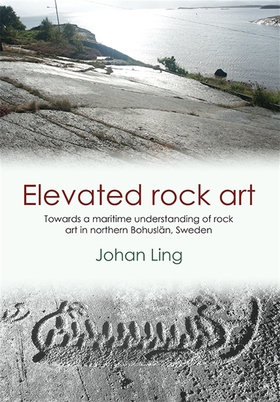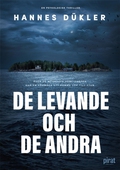
Lägg till önskelistan
Elevated Rock Art (SWEDISH ROCK ART RESEARCH SERIES) e-bok
Pris
115 kr
How may Bohuslän rock art and landscape be perceived and understood? Since the Bronze Age, the landscape has been transformed by shore displacement but, largely due to misunderstanding and certain ideas about the character of Bronze Age society, rock art research in Tanum has drawn much of its inspiration from the present agrarian landscape. This perception of the landscape has not been a major issue. This volume, republished from the GOTAC Serie B (Gothenburg Archaeological thesis 49) ...
E-Bok
115 kr
Pris
Förlag
Oxbow Books
Utgiven
15 Februari 2021
Längd
272 sidor
Genrer
Historia & Arkeologi, Konst, Musik, Teater, Film, Fackböcker
Språk
English
Format
epub
Kopieringsskydd
Vattenmärkt
ISBN
9781782977636
How may Bohuslän rock art and landscape be perceived and understood? Since the Bronze Age, the landscape has been transformed by shore displacement but, largely due to misunderstanding and certain ideas about the character of Bronze Age society, rock art research in Tanum has drawn much of its inspiration from the present agrarian landscape. This perception of the landscape has not been a major issue. This volume, republished from the GOTAC Serie B (Gothenburg Archaeological thesis 49) aims to shed light on the process of shore displacement and its social and cognitive implications for the interpretation of rock art in the prehistoric landscape. The findings clearly show that in the Bronze Age, the majority of rock art sites in Bohuslän had a very close spatial connection to the sea.
Much rock art analysis focuses on the contemplative observer. The more direct activities related to rock art are seldom fully considered. Here, the basic conditions for the production of rock art, social theory and approaches to image, communication, symbolism and social action are discussed and related to palpable social forms of the “reading” of rock art. The general location and content of the Bronze Age remains indicate a tendency towards the maritime realm, which seems to have included both socio-ritual and socio-economic matters of production and consumption and that Bronze Age groups in Bohuslän were highly active and mobile. The numerous configurations of ship images on the rocks could indicate a general transition or drift towards the maritime realm. Marking or manifesting such transitions in some way may have been important and it is tempting to perceive the rock art as traces of such transitions or positions in the landscape. All this points to a maritime understanding of Bronze Age rock art in northern Bohuslän.





